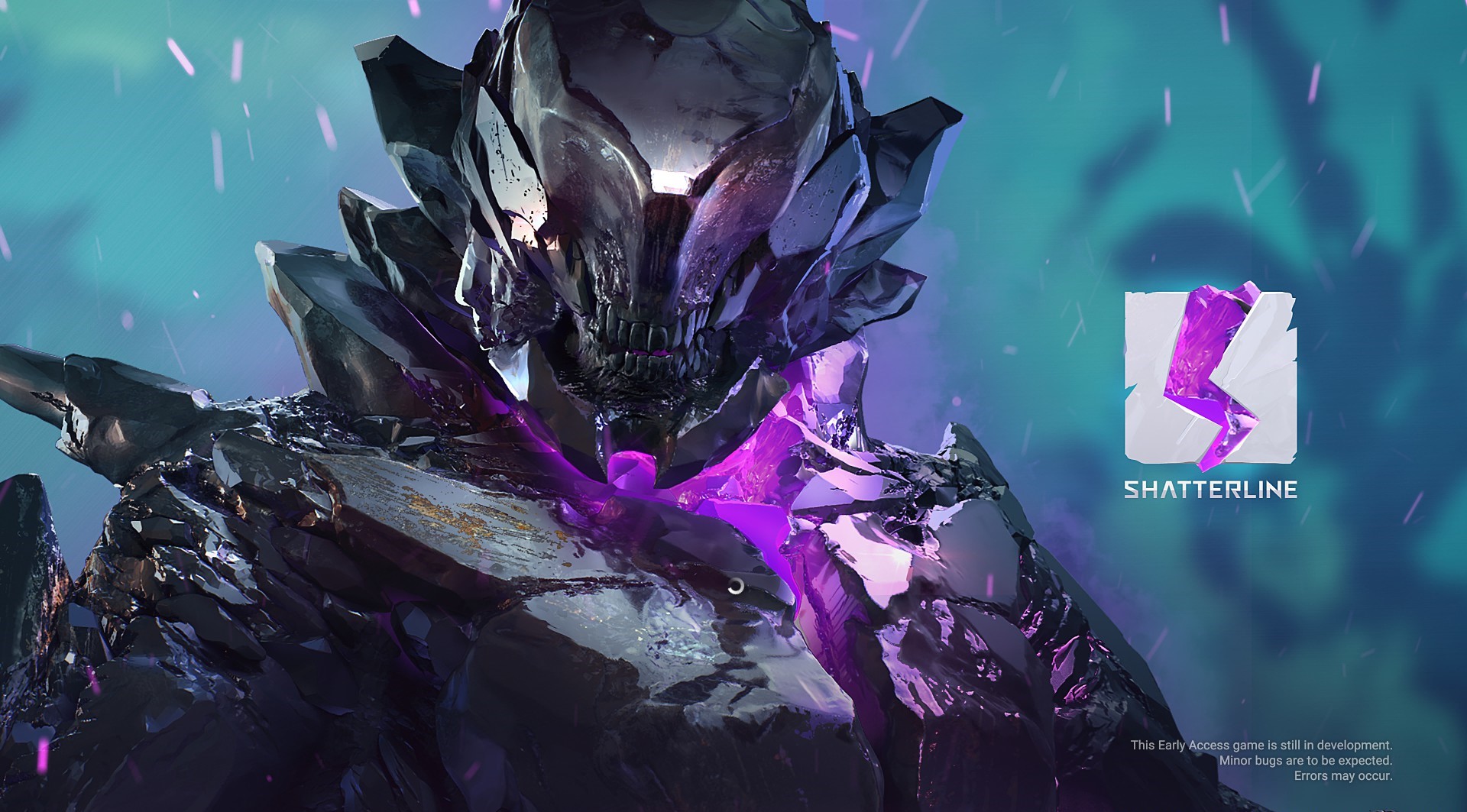Enter the Impact Zones to counter the Strafers. Grab that Red Salt from the Bomber Dogs you just took out. Beware of the Gardeners as you enter the Glasshead Nursery. Determining the nature of the Crystalline could save what remains of humanity. This is a global-scale military operation, and Shellguard’s scientific endeavors depend on your success.
If this sounds intriguing, then get ready for intense rogue-like expeditions with Frag Lab’s near-future, post-apocalyptic, massively multiplayer, first-person shooter Shatterline. Released September 8, 2022, you can play for free on PC with planned releases in the future for PS4/5, and XBox One.
THE LORE
There is a lot of lore behind Shatterline’s immersive story. The basics for newbies just starting the game are outlined here.
The year is 2028. An event now referred to as the Strafe occurred when a strange asteroid from the cosmos called Object X exploded above our planet. The massive, shard-like meteors impacted Earth’s surface, turning both large cities and small towns alike into toxic environments. Millions died from this destructive event recorded as the greatest tragedy in human history.
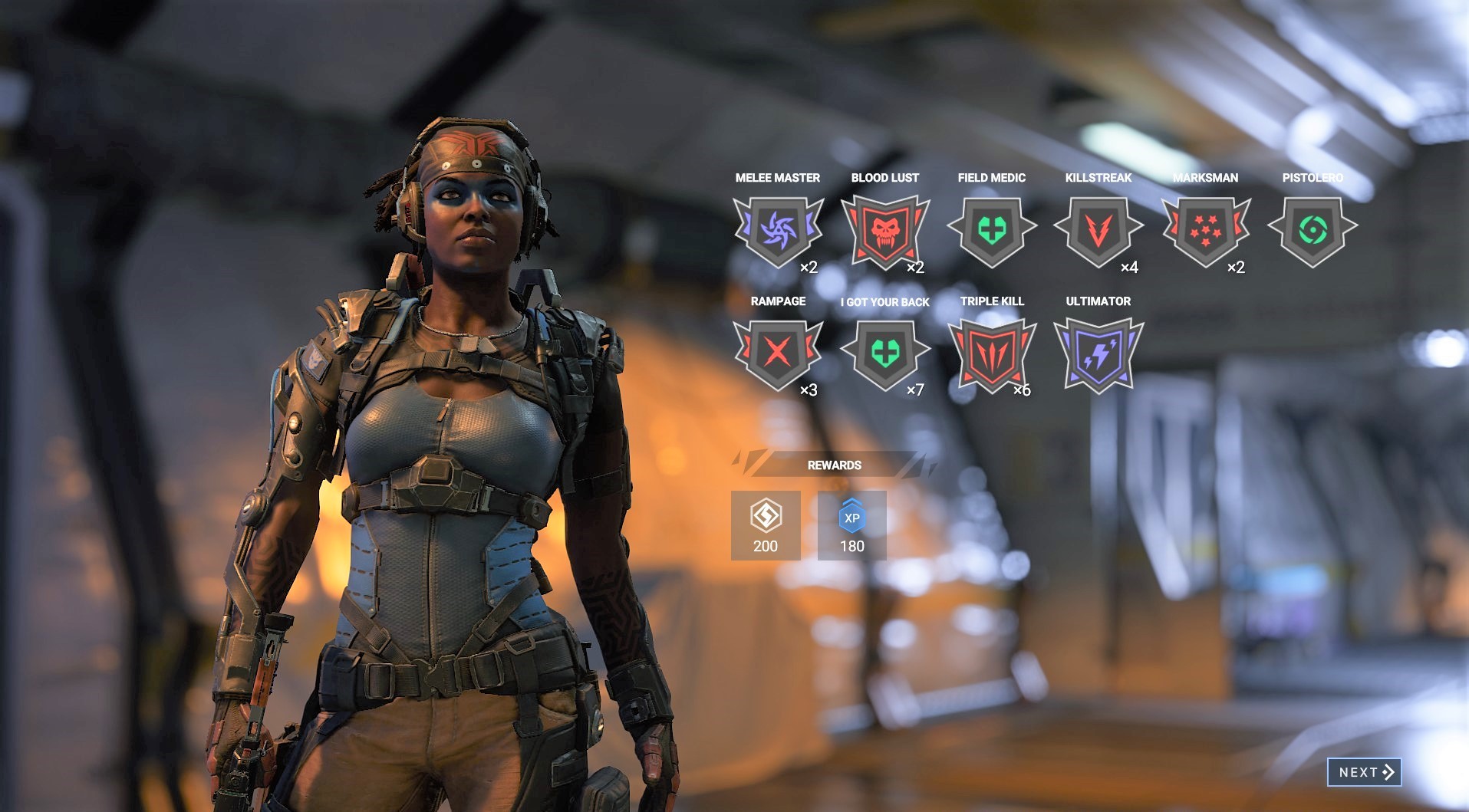
Despite grave casualties, humanitarian chaos, and destruction of infrastructure, the most dangerous aftermaths of the Strafe were Impact Zones and the spreading of Crystalline, a gigantic, interstellar contaminant. A fanatical group known as the Strafe Witnesses believe the Crystalline can be subdued to evolve themselves in the next stage of existence. The only hope to restore the world is for Shellguard to succeed in their scientific research.
Crystalline, ripped apart geomagnetic fields, creating razor-edged silica from living flesh. That’s right: Your neighbors, friends, and co-workers morphed into crystalline-infected monsters. Few were untouched by this new, horrific threat.
You were one of those Immunes, gifted with the rare V-Gene.
As a former soldier, you are now a Shellguard operative and part of an elite task force selected to defeat this global menace.Your military training will help you complete your assignment: Enter the dangerous Impact Zones. Eliminate the threat from both the Crystalline contamination and the Strafer warriors.
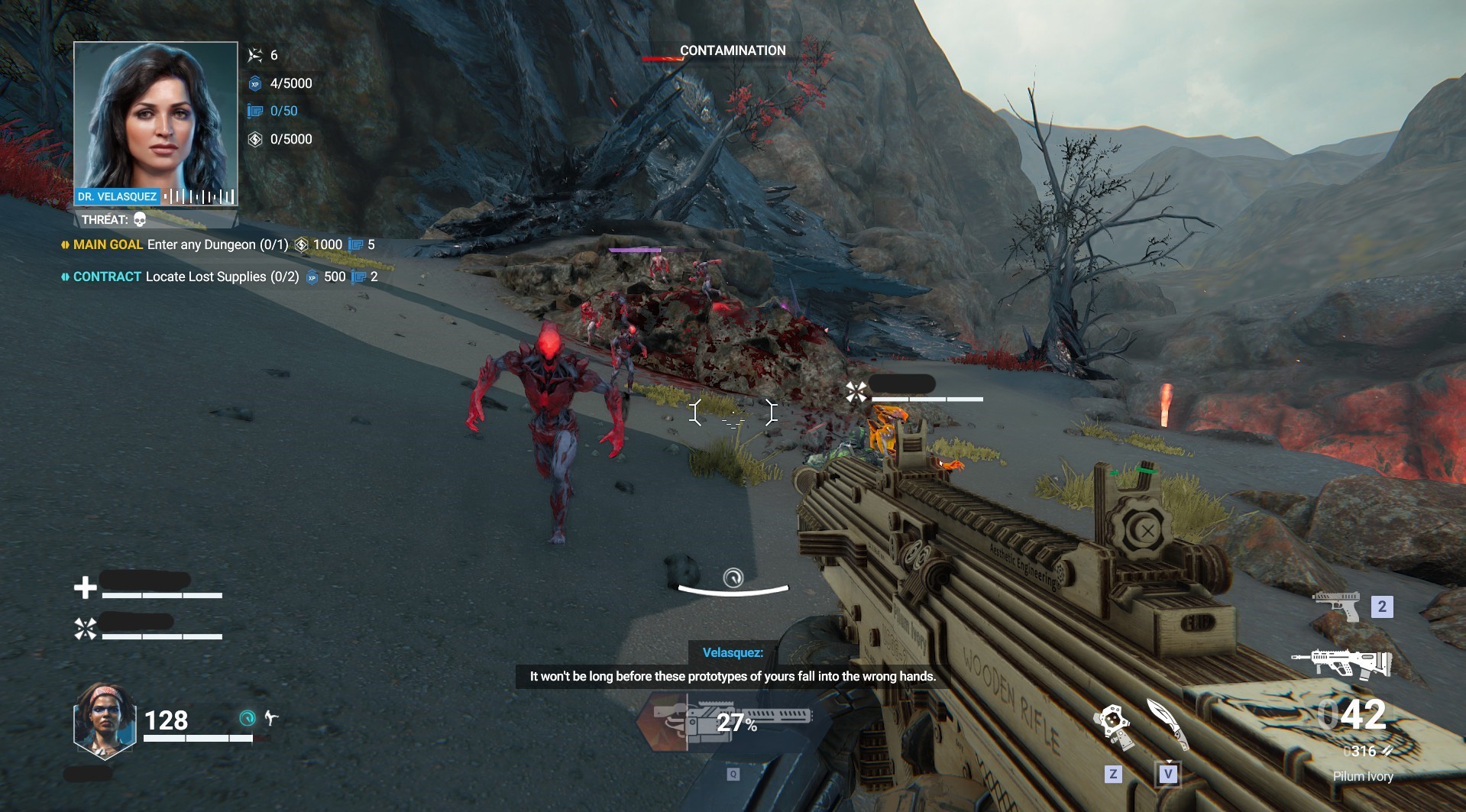
CO-OP
Expedition
The devs have called the Expedition mode the “real crown jewel of the game.” Playing through numerous Expeditions can allow players the ability to level up their preferred operatives, unlock higher-tiered weapons, and nail down the finer details of gameplay before moving on to the more fast paced PvP modes we’ll look into later.
At the start-up: Player-characters drop into an Impact Zone, starting out with only a sidearm and the Tactical Kukri, a melee weapon. The rogue-lite mode allows squads of 3 to work together to complete objectives, eliminating enemies along the way before extracting. The team chooses what to do first in a very non-linear fashion.
Like any other co-op game, teamwork is crucial. Splitting the party could have consequences. For example, if you go down too far from your teammates, you can’t get resurrected and rejoin the fight quickly. The other, longer alternative is to respawn and this really can mean the difference between failure and success. Once all members of the squad die, the mission is over.
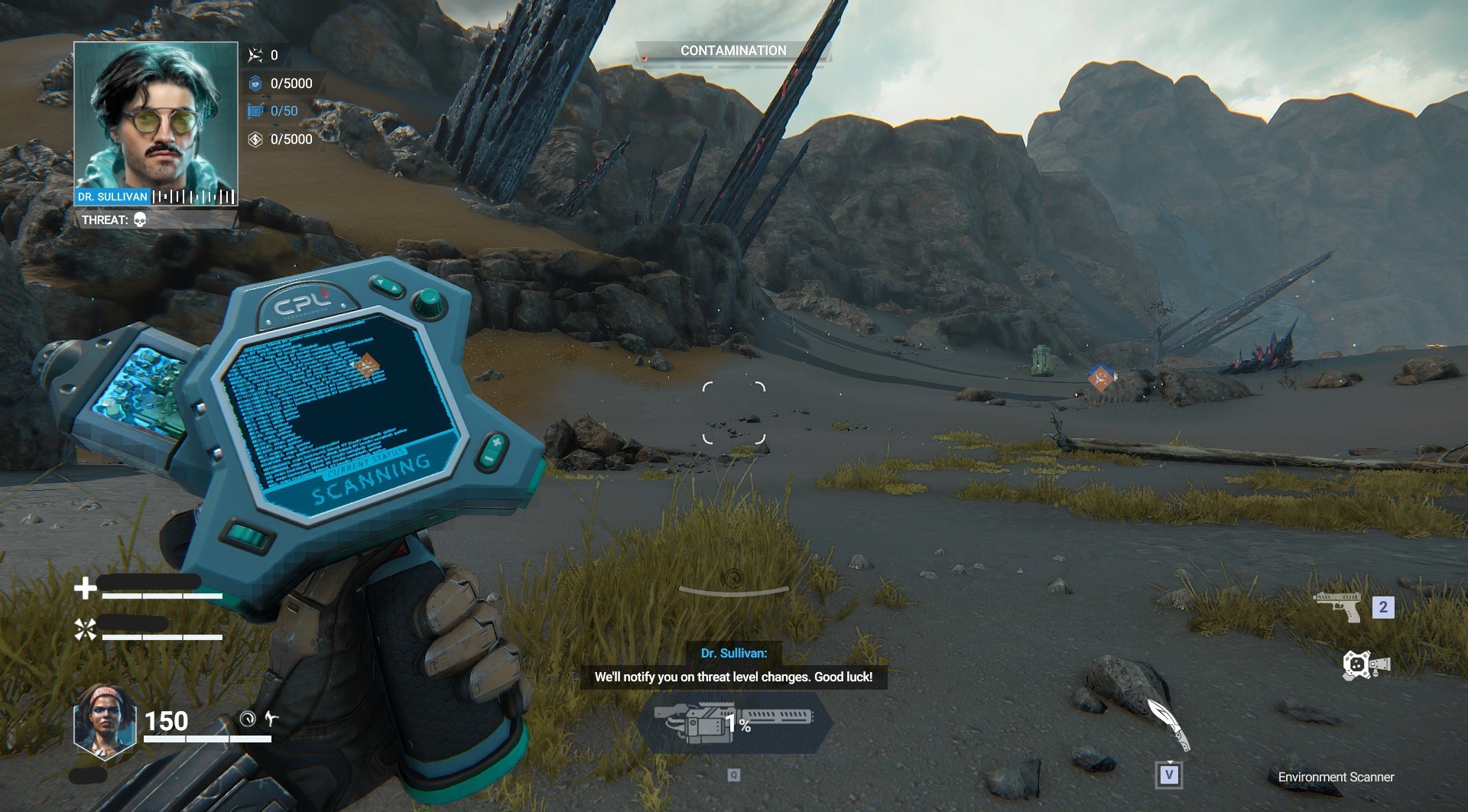
The map is divided into four sectors, and each has its own Threat Level. These levels, ranging from 1 to 4, determine the number of enemies the players will face. The starting sector is always Level 1.
From there, the team needs to decide what to do in that sector–complete objectives or move on to another sector. Contamination levels increase over time, so making smart, swift decisions is vital. One tool that helps: The Environment Scanners. Each team member has one, and they can use it to scan for points of interest and activities that offer rewards. Secret Stashes holding useful items are not detected using the Environment Scanner, but these can be located by exploring the Impact Zones.
Mule Communicators are one of the main POIs. These devices can be used to call in a Supply Drops. Red Salt is needed to use the Mule Communicators.
Story Mode
These co-op missions rotate frequently and are not all available at the same time. The majority of the lore detailed above plays a part in the story mode objectives. Because of that, this creates a far more immersive gameplay than the various PvP modes discussed later.
Depending on what your squad of three does can determine how long it takes to go through the story modes. There is no timer, so enjoy exploring while completing objectives. Unlike Expedition, Story Mode allows loadouts to be hand-selected. Only weapons that have been unlocked can be chosen (more on the armory and unlocking later). Every operative starts with their main gun and a secondary gun.
The Operatives
These protagonists of the story have unique and powerful skill sets that allow for a tailored gameplay experience. The current selection available to choose from includes:
Ciaran Gibson aka “Kite”, recon and tactician
Mason Smith aka “Ram”, armored juggernaut
Peter Collins aka “Pill”, support and reanimator
Kyra Whitmore aka “Strix”, experimental warfare specialist and defender
Adriana Ferrerira aka “Brisa”, recon and assassin
Zoriana Koval aka “Malva”, field medic, resuscitator, and healer
Dominic Wong, aka “Mongoose”, trooper and demolisher
Dieter Friedmann aka “Orbit”, trooper and ravager
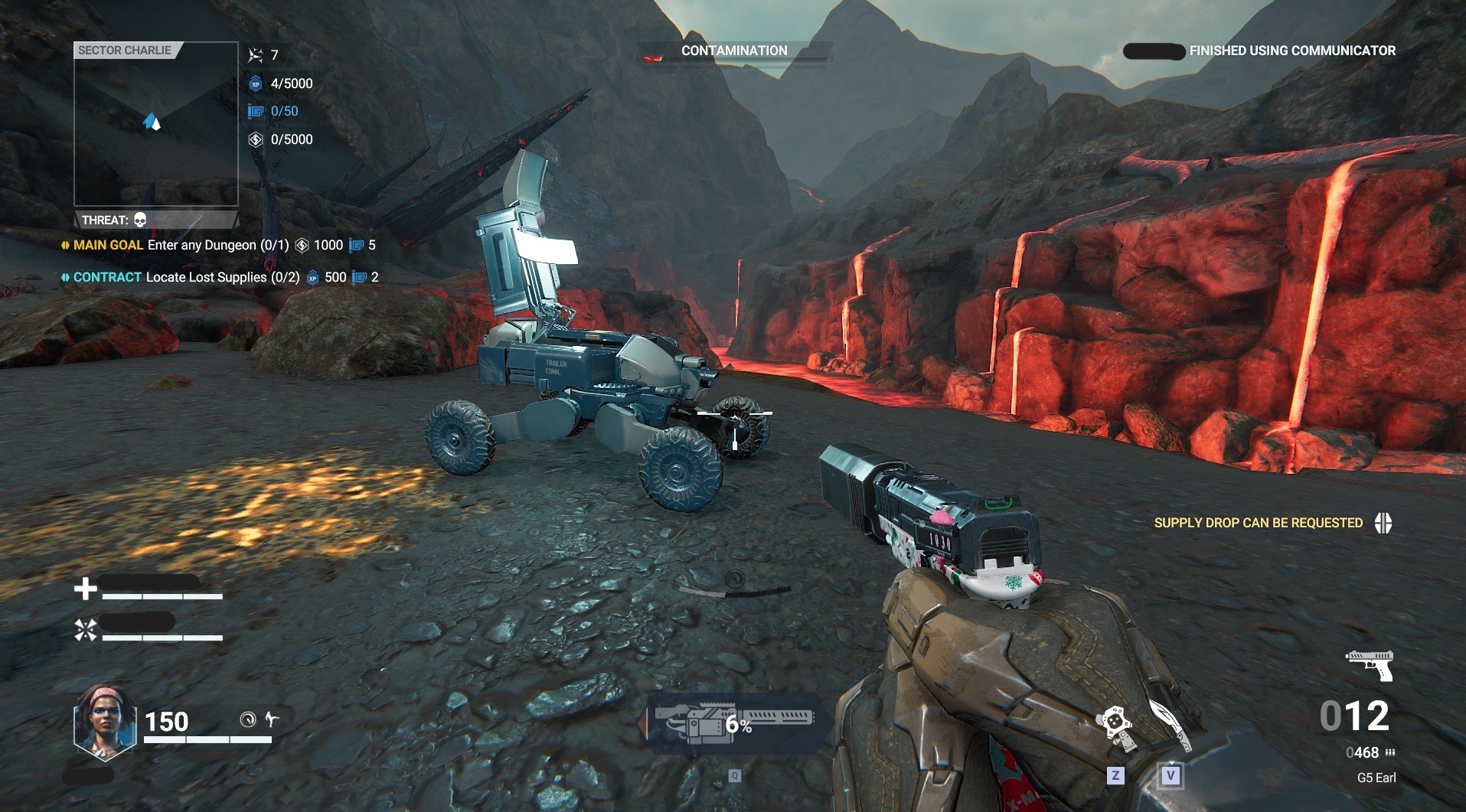
The Armory and Weapons
There are five weapons in each tier and five tiers. Within each tier, you will find an assault rifle, a sidearm, a shot gun, a submachine gun, and a sniper rifle. For every 25,000 XP players can unlock the next tier with its five options. Each has its own XP bar. Obviously, the more a particular firearm is utilized, the more XP it will yield. To reach tier 5, you will need 125,000 XP across the board. The caveat: Credits must be used to unlock each firearm individually, regardless which tier it is in, and the amount increases with each tier. It was nice to see details such as damage, RPM, accuracy, stability, range, stagger, capacity, and reload time listed, because I like others who frequently play FPS games find this useful when building my loadout.
Each weapon starts with only one attachment, with a maximum of three slots available for future upgrades and modifications. Additional slots must be unlocked with credits. There is a good variety of attachment options that can help improve performance, including scope, underbarrel, magazine, muzzle, and grip. Blueprints earned from completing in-game tasks and objectives are used to craft powerful upgrades and modifications. Once 300 blueprints are collected, a random modification can be created at the crafting station.
Don’t expect real-life accuracy, base damage, range, reload time, capacity, aiming speed, recoil, rate of fire, or effective distance. For example: My favorite operative to play–Strix–reloads unrealistically fast.
Any cosmetic customizations or skins added does not affect a weapon’s performance.
What’s Red Salt?
Collecting Red Salt is described by the game developers as the main focus of Shellguard’s expedition. From a player point of view, it doesn’t feel this way, as much of the time spent in the game is centered around eliminating enemies and monsters.
Red Salt is however valuable in that it is the backbone for operatives to gain special abilities and firearms. It is also the currency that can be spent on Supply Drops or Extraction requests.
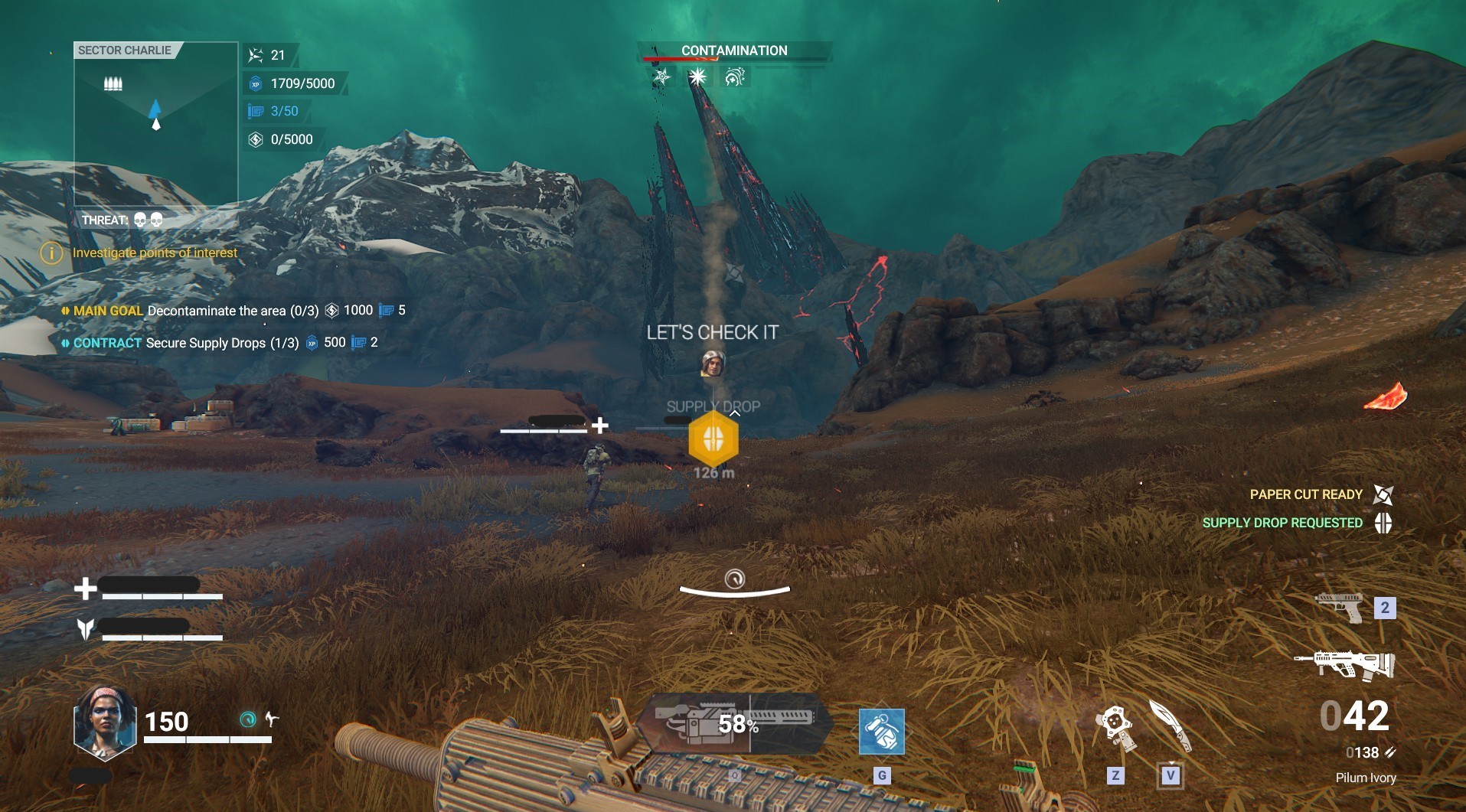
Supply Drops
After you request a Supply Drop from a Mule Communicator, you and your teammates can select one item from two to three options. The options offered include weapons, abilities, and special effects. One example of a special effect is enemies dropping ammo if that special ability was chosen from any previous Supply Drops. The different colors indicate the level of rarity (from common to legendary). Keep in mind that doesn’t mean it’s better if it works against your game style or the squad’s overall strategy for success.
The Adversaries
There are several AI-controlled enemies and monsters in Shatterline. Some of these were regular humans who were transformed during the Strafe. From the small, fragile Fireflies to the hard-hitting Minotaurs, players will engage a wide range of adversaries. These are the minions that you will face before and during BBEG encounters. The diversity of enemies and monsters initially feels exciting, but after dozens of hours of gameplay, the newness can wear off.
Contamination
Contamination has a significant role in Shatterline. The longer operatives remain in the Impact Zones before extracting, the more difficult the game becomes. This does make things more interesting, especially if you’re up for a good challenge. Here’s a small sampling of how increased contamination shakes up things:
Explosive anomalies: Balls of energy that randomly spawn when an operative kills an adversary–these energy spheres cause a lot of damage if you are standing with the field of damage
Lightning ball: These highly-charged spheres affect only one operative at a time–it causes damage by shocking and stunning the player-character
Increased melee damage: Exactly what it sounds like–enemies and monsters do more close-range damage
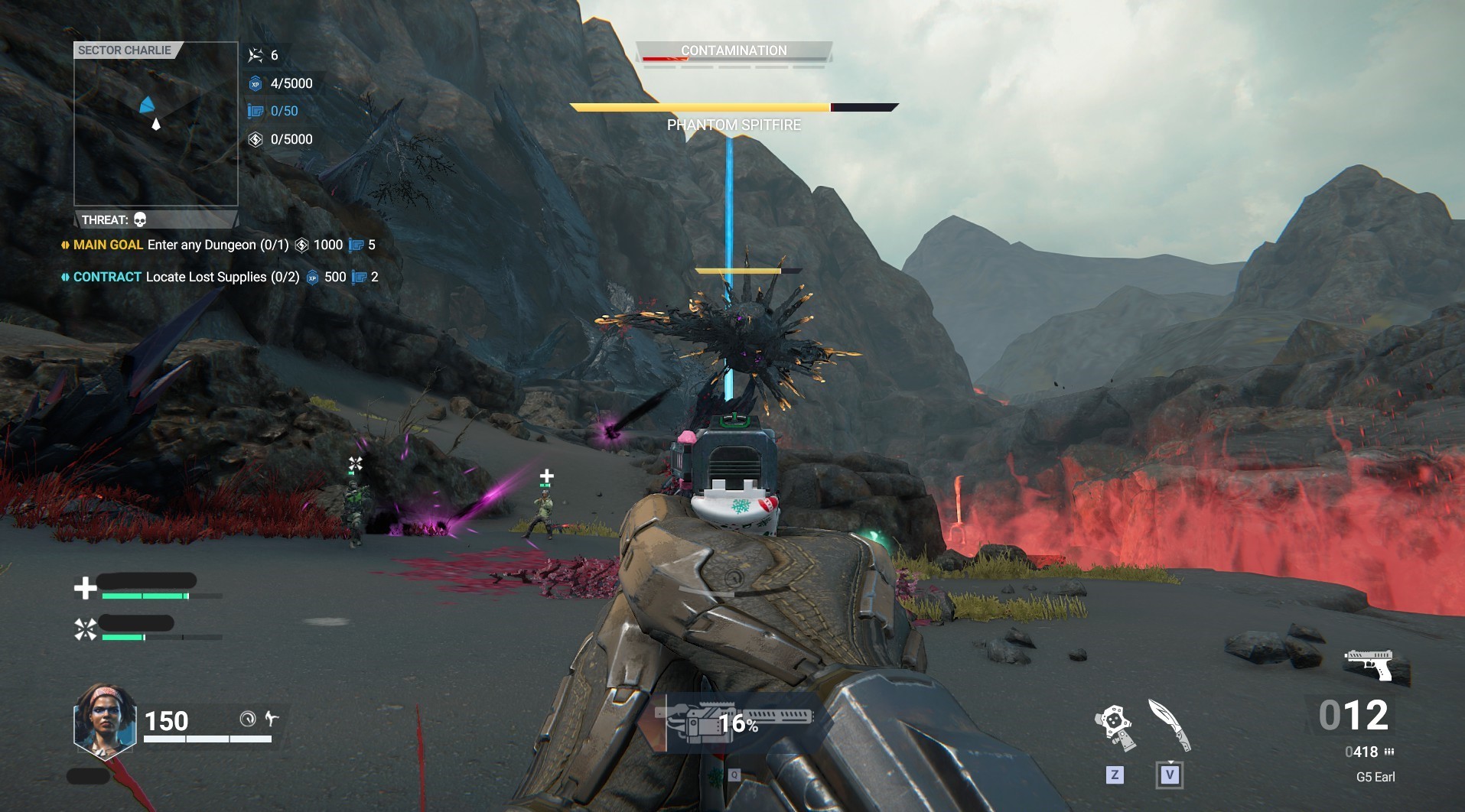
Objectives & Extraction
Extraction can be requested at a mule communicator by any team member. the team votes on whether to extract or to continue (majority wins). Once the vote is decided, a waypoint will ping on the map. When the squad arrives, expect to fight hostiles. Once they are all defeated, the team is extracted. forced extraction can also occur. If the contamination reaches the maximum amount, the squad has five minutes to extract or they will lose the game. killing the final boss initiates auto-extraction.
The UI
The UI is barebones. It’s worth mentioning because a few key components that could improve quality of life are missing. One that I find most frustratingly absent is a compass. This would make it far easier to communicate the cardinal directions to fellow teammates. The mini-map alone does not indicate a true north to allow for basic navigation functionalities or communication.
PvP
PvP modes feel like arcade-like shooters. Your XP from PvE carries over, so you don’t have to start from square one just because of changing over.
Some quick notes about PvP:
Opponents are highlighted in red.
The mini-map indicates when there’s enemy activity.
Friendly fire is turned off.
The TTK (time-to-kill) is swift.
Maps are randomized.
Except for 3 vs 3 mode, team size is six.
Except for 3 vs 3 and Barricade, respawning happens quickly.
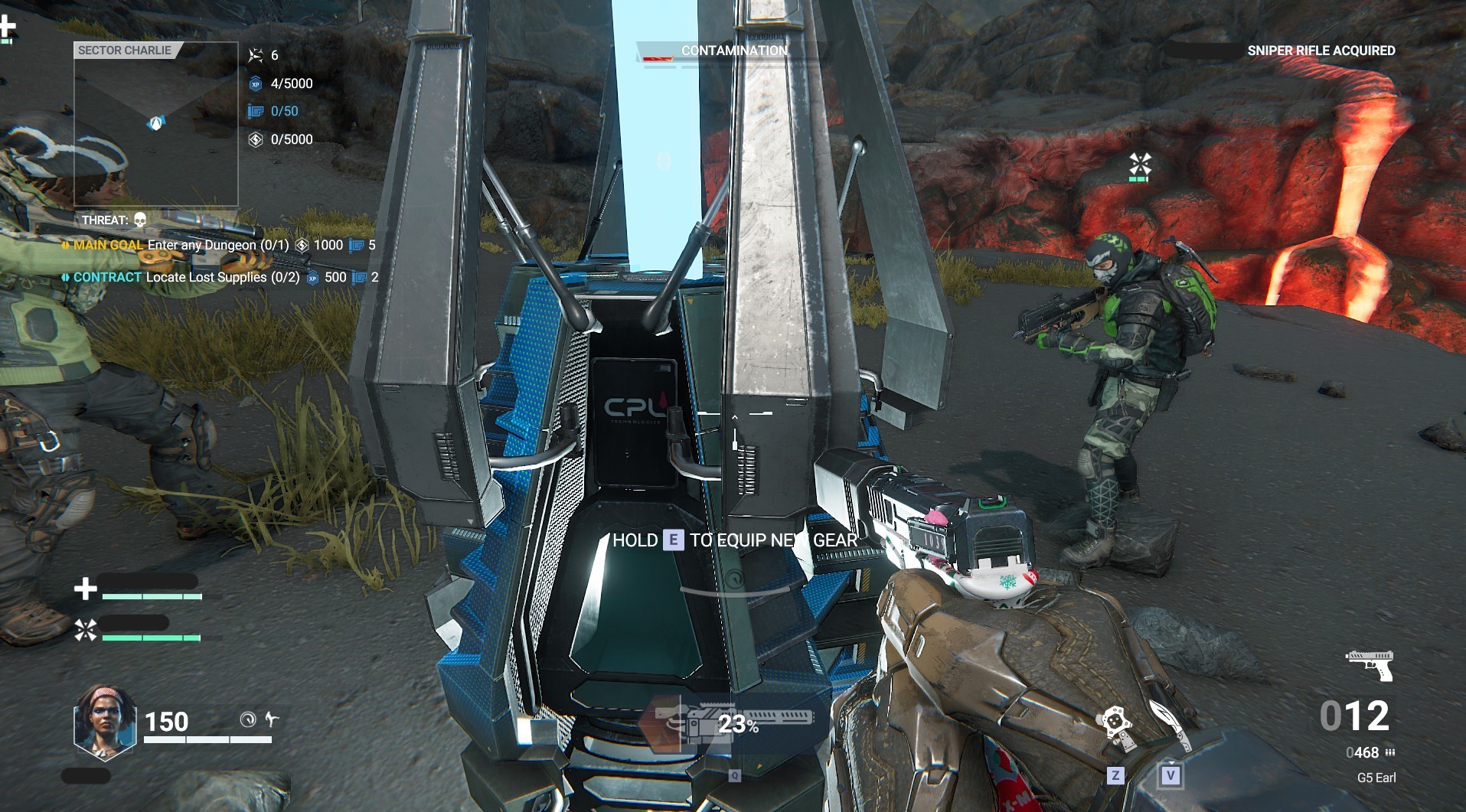
Here's a brief look at the different PvP modes:
In Conquest, the hardpoint to conquer moves often, so everyone playing has to stay alert. Conquering a hardpoint gives the team points, and the team with the highest score after 15 minutes wins. This one takes a bit of time to get the feel for with the hardpoint moving frequently.
Domination is like “capture the flag”, with three hardpoints that need to be captured and then secured until the end. I found this one similar to other games I’ve played in the past, so it was enjoyable.
Escort requires one team to transport a shipment of Crystalline cargo, delivering it safely through checkpoints until it reaches its final destination. The attacking team works to hamper movement of the shipment. The teams switch sides so each can have an opportunity to attack and defend. This was my favorite PvP mode, and if you’re a player like me who enjoys defending a stronghold, this should be quite enjoyable.
Barricade starts with every operative holding a special blaster that shoots out blue cubes. These are used to shape an environment that slows or blocks the opposing side. Rules for Team Deathmatch apply in this mode. I found it frustrating to get blocked in by my own team mates who seemed to build a random set of barricades with little-to-no strategy in mind. If you have claustrophobia, this might not be your preferred mode.
3 vs 3 is like a mini-deathmatch with no spawns during the rounds. Victory is awarded to the first team that wins six rounds. I felt very claustrophobic in this mode, as movement felt limited.
Team Deathmatch is exactly what you would expect from the name of the mode. If you like battle royale games, this would probably be quite appealing.
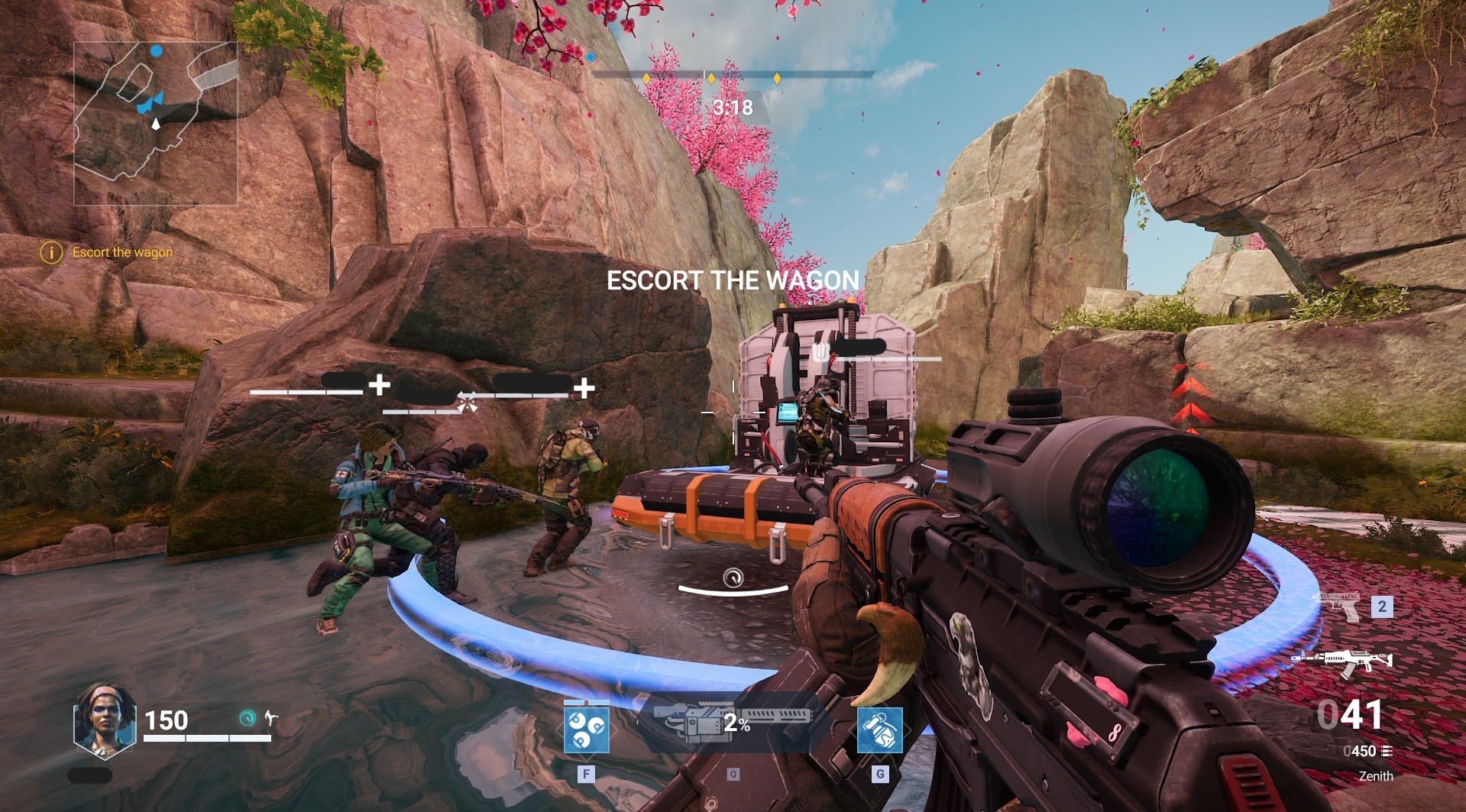
MONETIZATION:
The Season Pass
The official press release states: “Shatterline is a live service, aimed to monetize via paid seasonal battle passes. Buying a Premium pass will unlock exclusive season-themed cosmetics, but will not provide any gameplay advantage.”1 It’s refreshing to see there is no play-to-win option in a free-to-play game.
The Cosmetic Shop
The cosmetic shop is stocked with all those trinkets and outfits you never see on your character until the kill-cam replays how you died. These items cost in-game gold, which you can purchase with IRL money.
If you’re strapped for cash and enjoy Discord, you can join Frag Lab’s server and receive XP boosters for limited amounts of time. You can also take part in contests to win in-game gold for purchases in the cosmetic shop.
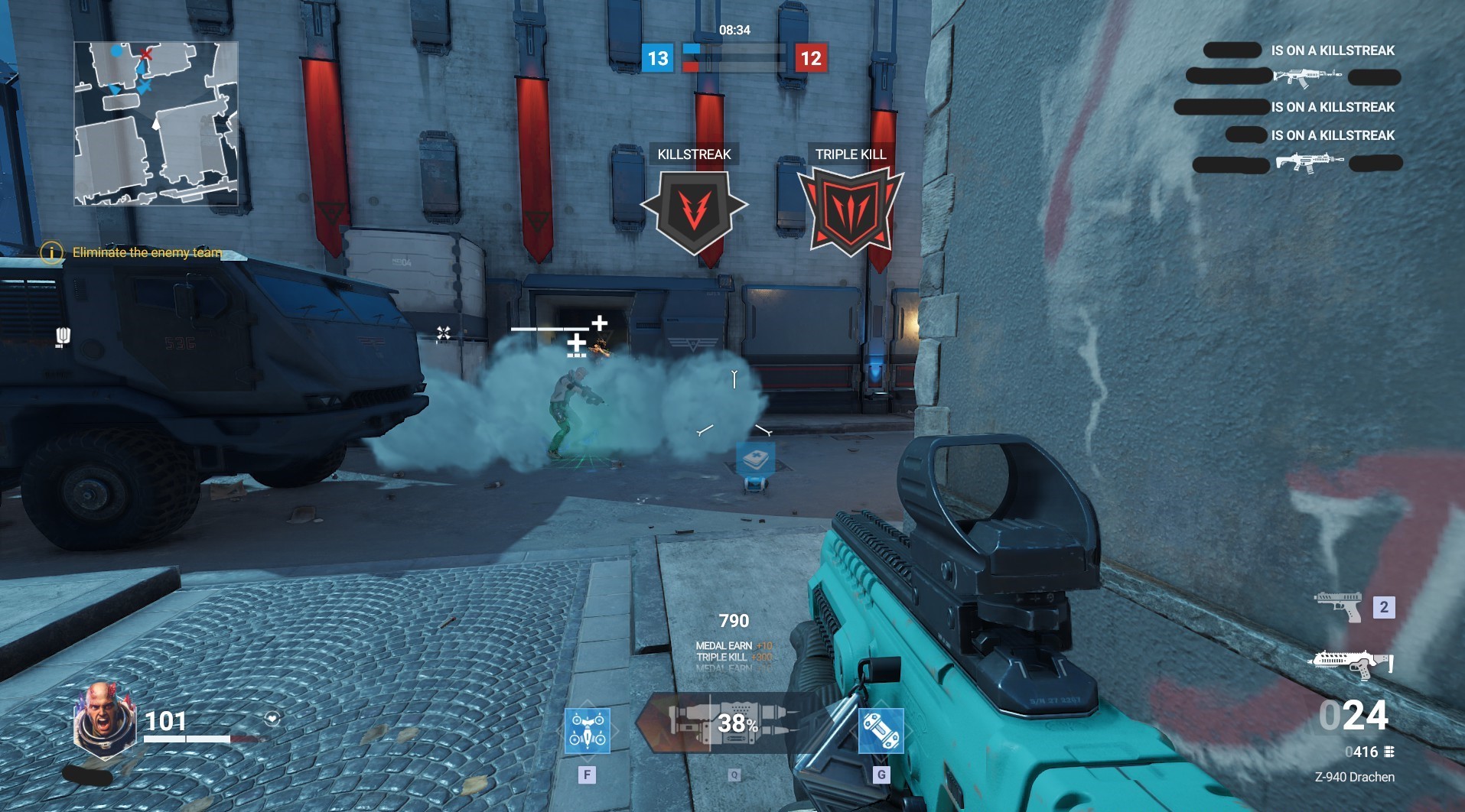
CONCLUSION
It’s not been determined how long the game will be in Early Access. That means a lot could still change. In fact, a lot already has in co-op mode from when I first began playing. Looking at the downward slope on steamcharts.com, (September 2022 the peak number of players was 21,652. In May 2023, the number had significantly dwindled down to 1,036. The downward trend has been consistent month-over-month.2)
Is this from a lack of marketing? Or will Shatterline see a surge in the future once it's out of Early Access?
Regardless, the developers seem highly involved through a variety of different ways. One example: They host the official Shatterline Discord server and regularly play the game with players from the community. Another: Starting May 6, 2023 Frag Lab announced that regular community updates would be released. These are a combination of news and sneak peeks for gamers to keep track of Shatterline’s progress. They collect feedback through various tools, including the in-game survey, live Q&A sessions via Discord, and the communist board on Steam.
Shatterline has a lot to offer, but the grind can wear on you after some time. Once top tier firearms in the armory are available, the game can lose its luster and begin to feel repetitive. However, it has a fascinating lore and the developers are receptive to the community. If you’re looking for a free-to-play First-person shooter to enjoy with others, Shatterline could be just the game you’re looking for.
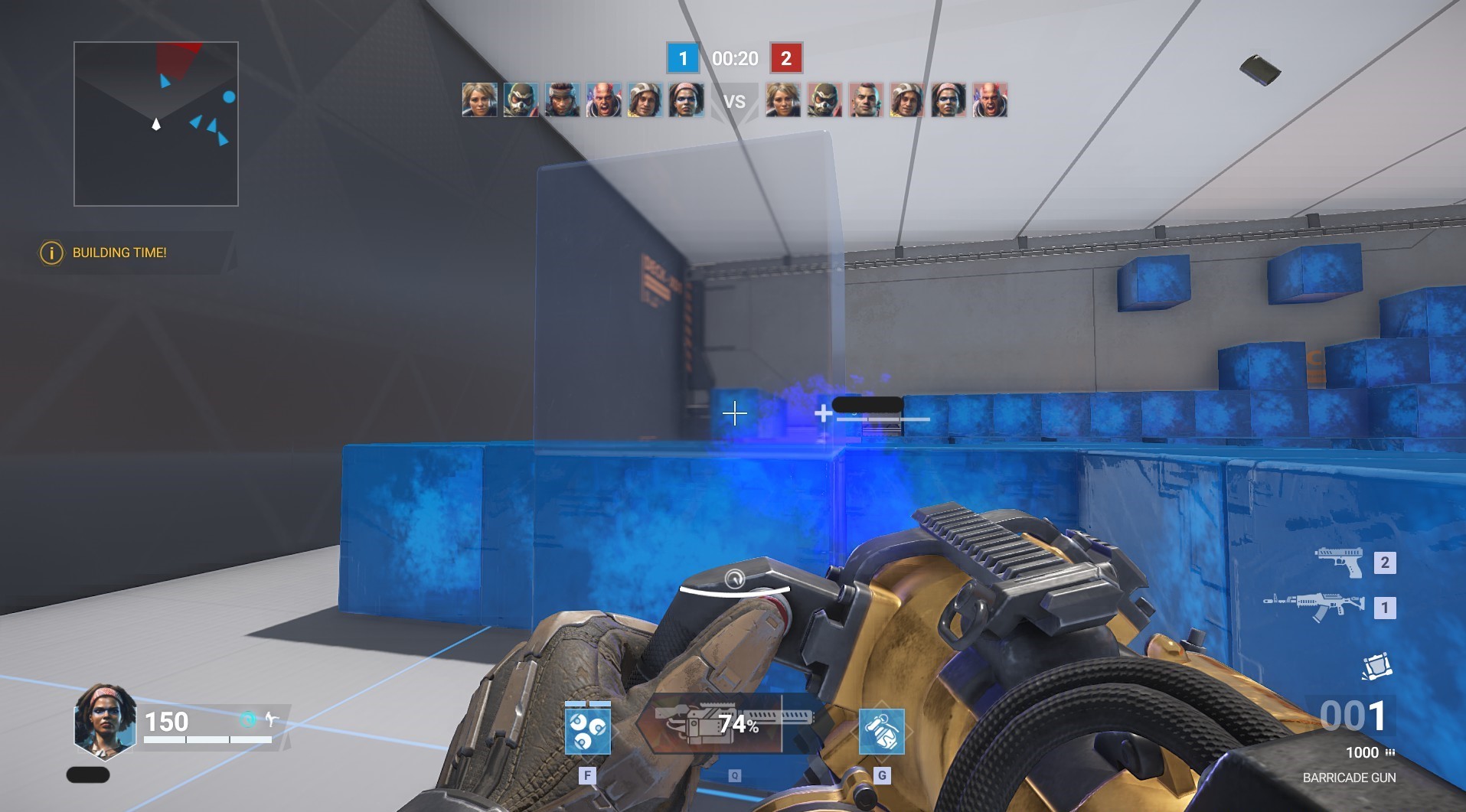
Pros
It’s free to play.
Friends can join and play the game with you.
The lore behind the story is actually really interesting.
The devs appear actively involved and continually send patches and updates as needed.
Cons
There is no skill-based match-making (SBMM). The level of expertise will vary widely among players on both sides.
The graphics are nice, but there’s room for improvement.
Initially, there seems to be a lot of firearms, upgrades, enemies, and other interesting elements. Sadly, after dozens of hours of gameplay it can begin to feel very rote and predictable.
SOURCES:
1https://docs.google.com/document/d/1SgFdjWcqFcfX71-euAmQ3s0gGTGsViQe/edit


